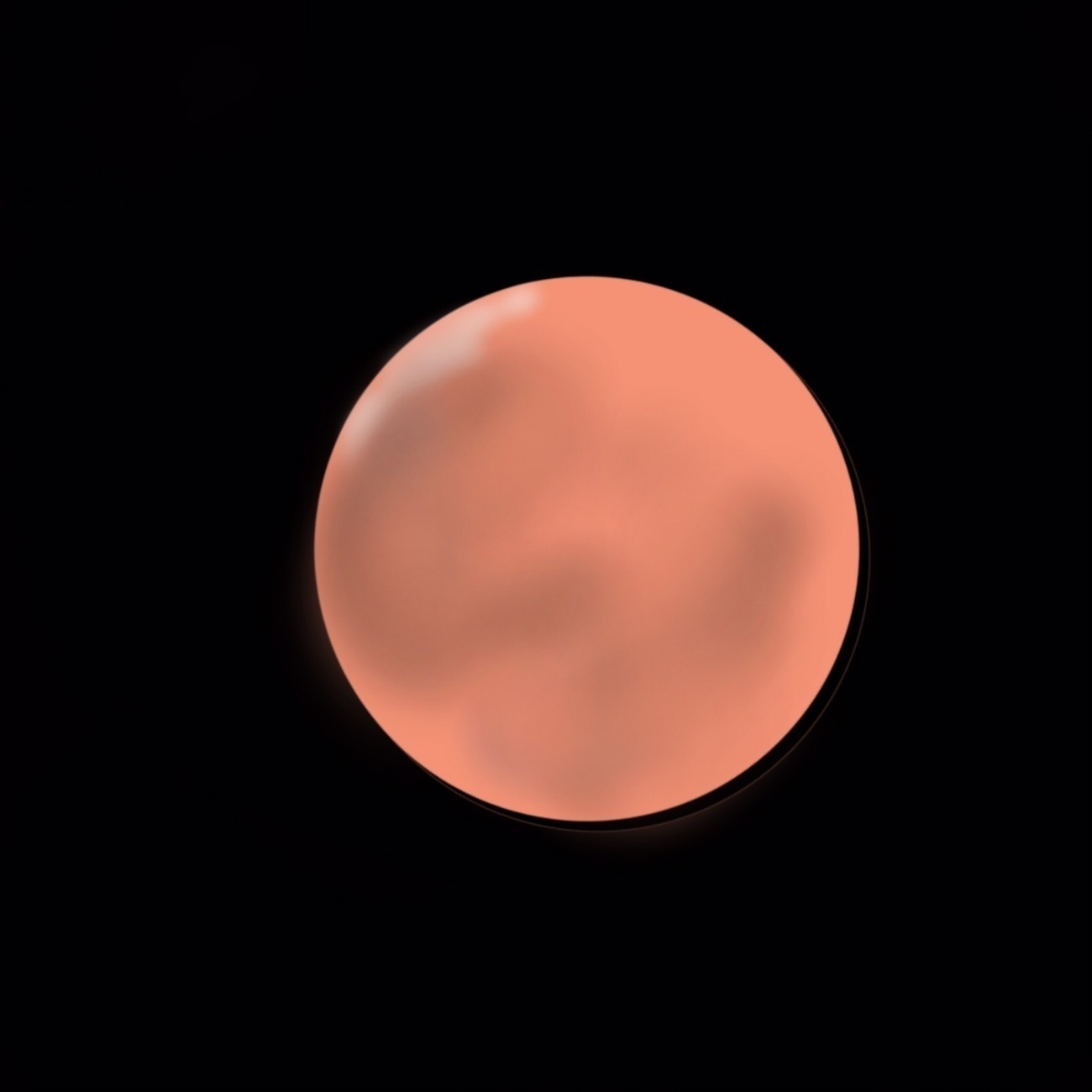Observing Mars
Mars. The Red Planet. We’ve made great progress learning about our neighbor in recent decades. We’ve currently got two active robots performing experiments and have had others. Imagery from Curiosity is incredibly detailed as is the science coming in from it’s ongoing collecting and processing of samples. I’ve mentioned before how easy it is to get lost in NASA’s Curiosity website.
But in terms of visual, amateur astronomy, I’ve only ever given Mars a cursory glance. If memory serves, it appeared as a off-white, pinkish disc. Nice to look at on occasion but nothing like a view of Jupiter or Saturn both of which offer surface details, moons and in the case of Saturn, rings. But Now I’m wondering if the fault was mine? Did I not look hard enough? I recently revisited the planet and saw surface details I’d not previously noticed. This was a view of Mars worth repeating more often!! A quick look in my preferred astronomy app for the iPad, Sky Safari, suggests that “In a small telescope, Mars shows many of the surface features that sparked the imagination of science fiction writers.” It may be that I was looking when local atmospheric conditions weren’t good or perhaps at a time when something was happening on Mars to obscure the details.
[caption width=“1300” id=“attachment_821” align=“aligncenter”] Observation of Mars June 5, 2016, 10:30pm. Sketched with Procreate on iPad. [/caption]
Observation of Mars June 5, 2016, 10:30pm. Sketched with Procreate on iPad. [/caption]
Now that I’ve had a good look and seen some detail I can say with certainty that I’ll be visiting the planet every chance I get. The surface details will change based on the season as well as the fact that a Mars day is 37 minutes longer than an Earth day which, if I’m thinking about this correctly, means that over time the side facing Earth will gradually change. In some ways viewing Mars is like a blend of viewing our moon and viewing a planet like Jupiter. By this I mean that, like our moon, we can observe features on the surface of the planet. But it’s not a static image. Our moon has no atmosphere and presents a static image to us. As with our observations of Jupiter, what we see with Mars will change over time. From month to month the view will change not only because of the difference in period of rotation but because of season and atmosphere. Fantastic!